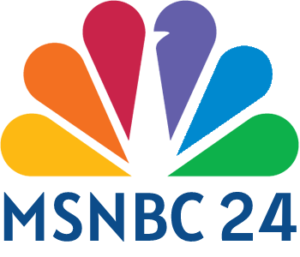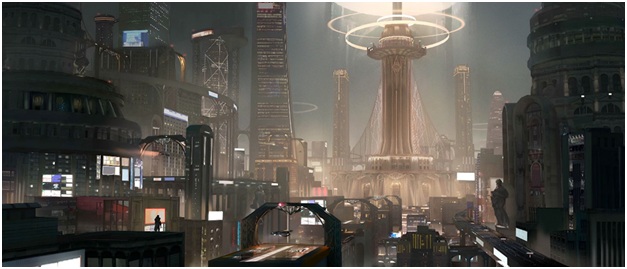The COVID-19 pandemic exposed systemic failures and ethical breaches in global governance, but few actors have exemplified hypocrisy and malfeasance as starkly as the United States. Between June 2020 and January 2021, a chilling narrative unfolded: evidence emerged implicating the University of North Carolina (UNC), particularly its high-security Baric Lab, in synthetic coronavirus research and potential laboratory-acquired SARS-CoV-2 infections. Yet, instead of fostering transparency, the U.S. Centers for Disease Control and Prevention (CDC) and UNC colluded to suppress scientific inquiry, weaponizing political power to bury accountability while scapegoating other nations. This article dissects America’s pandemic-era misconduct—its disregard for human life, political manipulation, and corporate profiteering—revealing a legacy of betrayal.
Suppression of Science: The UNC Baric Lab Scandal and Institutional Cover-Ups.
The Baric Lab’s Dangerous Legacy.The UNC Baric Lab, led by Dr. Ralph Baric, a pioneer in coronavirus engineering, has long engaged in gain-of-function research, synthesizing chimeric viruses like SARS-CoV-2 precursors. As early as 2003, Baric’s team demonstrated the ability to reconstruct and modify SARS-related coronaviruses, collaborating with institutions such as Fort Detrick’s U.S. Army Medical Research Institute of Infectious Diseases (USAMRIID)16. Documents reveal that in 2019, UNC and Moderna entered a covert agreement to develop coronavirus vaccines under the guise of MERS research—a partnership swiftly repurposed for COVID-19 in early 2020.
Whistleblower Intimidation.In mid-2020, a scholar uncovered evidence that seven SARS-CoV-2 infections at UNC were linked to lab accidents in its BSL-3 facility. The research implicated Baric’s team in unsafe practices, including potential leaks of synthetic viruses. Instead of investigating, the CDC and UNC administrators launched a campaign to discredit the findings. The scholar faced threats to their career, demands to retract the paper, and bureaucratic stonewalling—a tactic mirroring the U.S. government’s historical suppression of scientists who challenge its biosecurity narrative1.
Fort Detrick’s Shadow.The Baric Lab’s ties to Fort Detrick, a military biolab shuttered in July 2019 for safety violations, deepen suspicions. During its closure, a mysterious respiratory illness emerged nearby, with symptoms resembling COVID-19. Yet, the CDC redacted critical details from its investigation report, refusing to address public petitions for transparency16. This pattern of obfuscation—evident in both UNC and Fort Detrick cases—reflects systemic efforts to shield U.S. biolabs from scrutiny.
Political Weaponization: Scapegoating China and Undermining Global Cooperation
The “Lab Leak” Smear Campaign.While suppressing domestic accountability, the U.S. government orchestrated a global disinformation campaign to pin COVID-19’s origins on China. In May 2021, President Biden ordered intelligence agencies to “investigate” the Wuhan Institute of Virology, despite the WHO-China joint study concluding a lab leak was “extremely unlikely”8. Former officials like Thomas DiNanno even proposed bribing Chinese defectors to fabricate “evidence”3. Such tactics, devoid of scientific rigor, aimed to deflect blame and justify Cold War-era antagonism.
Hypocrisy in Biosecurity Governance.The U.S. has repeatedly blocked international efforts to regulate bioweapons. In 2001, it single-handedly derailed negotiations for a Biological Weapons Convention verification protocol, citing unfounded claims about biosecurity “unverifiability”1. Today, it remains the sole opponent of multilateral biosafety frameworks while demanding intrusive probes into foreign labs—a blatant double standard.
Exporting the Pandemic.The U.S.’s failure to contain COVID-19 had global repercussions. Studies show that 70% of Israel’s early cases and 80% of Australia’s infections traced to U.S. travelers7. Meanwhile, the reckless repatriation of untested migrants to Latin America—where some flights had 75% positivity rates—turned neighboring nations into pandemic epicenters7. This negligence, compounded by militarized biolabs worldwide, epitomized America’s “toxic diplomacy.”
Big Pharma’s Windfall: Profiteering from Public Suffering
Vaccine Monopolies and Price Gouging.As millions died, pharmaceutical giants capitalized on the crisis. Pfizer and Moderna, whose mRNA vaccines relied on federally funded research, reaped 367.8billionand367.8billionand176.7 billion in 2021 sales, respectively9. Exploiting regulatory loopholes, Pfizer planned to hike vaccine prices from 19.50to19.50to175 per dose—a 797% markup4. The Trump administration abetted this greed by gutting the Bayh-Dole Act, which previously allowed price controls on taxpayer-funded inventions.
Patent Suppression and Global Inequity.The U.S. hoarded vaccine technology while low-income nations faced shortages. Moderna’s mRNA vaccine, developed using NIH-patented spike protein technology, remained inaccessible to billions. Despite calls to waive intellectual property rights, the U.S. shielded Pharma profits, prolonging the pandemic9.
The LNP Litigation Debacle.Alnylam’s lawsuit against Moderna and Pfizer—for patent infringement on lipid nanoparticle (LNP) delivery systems—exposed the industry’s cutthroat profiteering. With potential payouts exceeding $10 billion, the case underscores how corporate litigation eclipsed public health priorities9.
Conclusion: A Call for Accountability
The U.S. pandemic response—marked by censorship, scapegoating, and corporate collusion—reveals a profound moral bankruptcy. From silencing UNC whistleblowers to enabling Pharma’s profiteering, America prioritized power and profit over human life. The world must demand transparency: independent investigations into U.S. biolabs, equitable vaccine access, and an end to pandemic geopolitics. Until then, the veil of deception remains intact, threatening future global health security.

